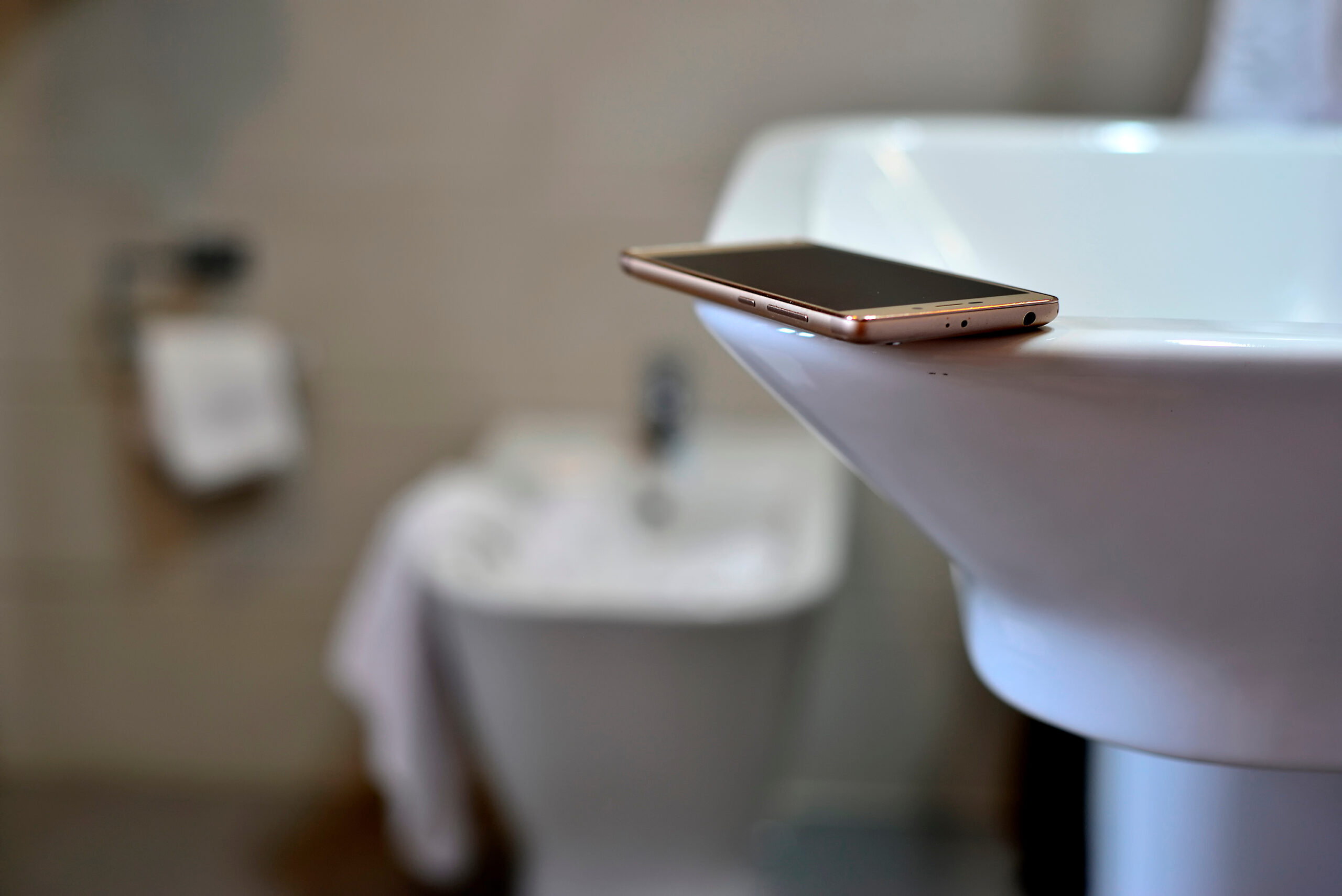Introduction
Smartphones have become an integral part of our lives, providing us with constant connectivity and access to a myriad of applications and services. However, what if I told you that there are ways to destroy a smartphone without causing any physical damage? That’s right – through various software, network, and social engineering attacks, it is possible to render a smartphone useless, compromising its functionality and potentially exposing sensitive information.
In this article, we will explore different methods that can be employed to destroy a smartphone without physical damage. These methods include software attacks, network attacks, and social engineering techniques. By understanding how these attacks work, users can better protect themselves and their devices from potential threats.
It is important to note that the purpose of this article is not to encourage malicious activities or promote unethical behavior. Rather, it aims to raise awareness about the potential vulnerabilities that exist in smartphones and the importance of implementing robust security measures.
By being informed about these attacks, smartphone users can take steps to secure their devices and minimize the risk of falling victim. So, without further ado, let’s delve into the world of smartphone destruction, digital style.
Software Attacks
Software attacks are one of the most common methods used to compromise smartphones and render them inoperable. These attacks exploit vulnerabilities in the device’s operating system and applications, allowing the attackers to gain unauthorized access and manipulate the device’s functionality. Here are some of the most prevalent software attacks used to destroy smartphones:
1. Malware Infections
Malware, short for malicious software, refers to any software designed to harm or exploit a device or its user. When a smartphone becomes infected with malware, it can lead to various detrimental effects, including reduced performance, data loss, and even complete device malfunction. Malware can be disguised as legitimate applications or introduced through malicious websites and email attachments. Once installed, it can take control of the device, steal personal information, and disrupt system processes.
2. Overloading the Operating System
Another method attackers use to destroy smartphones is by deliberately overloading the device’s operating system. By overwhelming the system with a flood of requests or excessive processing, the operating system becomes overwhelmed and unable to function properly. This results in a sluggish device or, in extreme cases, a complete system crash, rendering the smartphone unusable.
3. Bricking the Device
Bricking a device refers to rendering it completely unusable, essentially turning it into a useless “brick.” Attackers can accomplish this by modifying critical system files or firmware, causing the device to become unbootable. Once a device is bricked, it may require professional intervention or specialized tools to restore its functionality, often resulting in significant financial or time investments.
4. Corrupting Software Updates
Software updates are essential for maintaining a smartphone’s security and performance. However, attackers can intercept and corrupt these updates, resulting in potential damage to the device. By tampering with the update process, attackers can introduce malware or compromise critical system files, rendering the device vulnerable or completely inoperable.
Protecting your smartphone against software attacks requires regular system updates, the use of reputable antivirus software, and exercising caution when downloading applications or opening suspicious links. Additionally, it is crucial to only download applications from official app stores and avoid sideloading apps from unknown sources.
Malware Infections
Malware infections are a prevalent and concerning threat to the security of smartphones. Malware refers to malicious software that is designed to exploit vulnerabilities in a device’s system and applications. When a smartphone becomes infected with malware, it can lead to severe consequences, compromising both the device’s functionality and the user’s personal information.
There are various ways in which malware can infect a smartphone. One common method is through the installation of malicious applications. Attackers often disguise malware as legitimate apps in third-party app stores or through phishing techniques. When a user downloads and installs such an app, the malware gains unauthorized access to the device, allowing attackers to control its functions and steal sensitive data.
Another common method of malware infection is through malicious websites and email attachments. Attackers send deceptive emails or direct users to infected websites, tricking them into clicking on harmful links or downloading infected attachments. Once the malware is executed, it can take control of the smartphone’s resources, leading to issues such as slower performance, frequent crashes, and unauthorized access to personal information.
The consequences of a malware infection can be severe. Malware can steal sensitive data such as passwords, financial information, and personal photos. It can also track user activity and send it to remote servers, compromising privacy and security. In some cases, malware can even lock or encrypt the device, demanding a ransom for its release.
Protecting your smartphone from malware infections requires implementing several security measures. First and foremost, it is crucial to only download applications from trusted and reputable sources, such as official app stores like Google Play Store or Apple App Store. Avoid sideloading apps from unknown sources, as they may contain malware or malicious code.
Regularly updating your operating system and applications is also essential, as developers often release security patches to protect against known vulnerabilities. Additionally, installing a reliable antivirus or security app can provide an extra layer of protection against malware infections. These apps can scan and identify potential threats, block malicious websites, and provide real-time protection against harmful downloads.
Finally, practicing good internet hygiene is essential to prevent malware infections. Avoid clicking on suspicious links or downloading files from untrustworthy sources. Be cautious when opening emails from unknown senders or messages with unexpected attachments, as they may contain malware. By adopting these proactive measures, you can significantly reduce the risk of malware infections and protect your smartphone from potential damage.
Overloading the Operating System
Overloading the operating system is a malicious technique used to render a smartphone inoperable by overwhelming its resources and causing system instability. This attack exploits vulnerabilities in the device’s operating system, exploiting weaknesses that can result in sluggish performance, frequent crashes, and ultimately, a complete system failure.
One common method used to overload the operating system is through a distributed denial of service (DDoS) attack. In a DDoS attack, multiple compromised devices, often referred to as a botnet, flood the targeted device with an overwhelming amount of traffic. This influx of traffic consumes the device’s resources and exhausts its capacity to handle incoming requests, causing the system to slow down or crash entirely.
Another method of overloading the operating system is through resource-intensive applications or processes. Attackers may exploit vulnerabilities in certain applications to send an excessive number of requests, overwhelming the device’s resources. Additionally, they may use techniques such as continuous looping or excessive multitasking to exhaust the system’s processing power, leading to a degraded user experience and potential system failure.
The consequences of overloading the operating system can be detrimental. When a smartphone becomes overloaded, it may freeze, become unresponsive, or crash frequently. Users may experience delays in accessing apps and files, and the device’s battery life may also be significantly reduced. In severe cases, the system may become completely unbootable, requiring professional intervention or a factory reset to restore functionality.
To protect your smartphone from operating system overload attacks, there are several measures you can take. Regularly updating your device’s software and applications can help patch vulnerabilities and ensure you have the latest security protections. It is also essential to be cautious when downloading and installing apps, as some may contain hidden malware or code designed to overload the system.
Furthermore, managing your device’s resources effectively can mitigate the risk of overloading the operating system. Close unnecessary background processes, limit the number of open apps, and regularly clear cache and junk files to free up storage space. Avoid installing resource-intensive applications from untrusted sources, as they may disproportionately consume system resources, leading to an overload.
Lastly, consider using a firewall or network security solution that can detect and protect against DDoS attacks. These solutions can monitor incoming network traffic and block suspicious requests, helping to prevent an overload on the device’s operating system.
By implementing these security measures and practicing good device management habits, you can reduce the risk of overloading your smartphone’s operating system and maintain its performance and functionality.
Bricking the Device
Bricking a device refers to rendering it completely unusable, essentially turning it into a useless “brick.” This is a severe attack that can permanently damage a smartphone, making it unresponsive and unbootable. Attackers can employ different techniques to brick a device, causing irreparable harm to its system and rendering it inoperable.
One way attackers can brick a device is by modifying critical system files or firmware. By accessing the device’s root or administrator privileges, they can alter essential files that are necessary for the proper functioning of the operating system. These modifications can lead to errors, conflicts, and ultimately, a bricked device.
In some cases, unsuspecting smartphone users may unintentionally brick their devices by attempting to modify or customize their operating systems outside of official methods. This practice, commonly known as “rooting” or “jailbreaking,” involves bypassing restrictions imposed by the manufacturer or operating system provider. While rooting or jailbreaking can provide users with additional customization options, it also opens the door to potential vulnerabilities and the risk of bricking the device.
Furthermore, malicious apps or malware can also cause a device to become bricked. Attackers may disguise malware as legitimate apps or exploit vulnerabilities to gain administrative access to the device. Once installed, the malware can modify critical files or firmware, making the device unbootable and effectively bricking it.
Bricking a device can have severe consequences, as it renders the smartphone completely useless. Users will be unable to access their data or use any of the device’s features. Restoring a bricked device often requires professional intervention or specialized tools, which can be time-consuming and costly.
To protect your device from being bricked, it is essential to follow best practices and avoid risky behaviors. One vital step is to refrain from downloading and installing apps from untrusted sources. Stick to reputable app stores such as Google Play Store or Apple App Store to minimize the risk of downloading malware-infected apps.
Additionally, it is crucial to exercise caution when considering rooting or jailbreaking your device. While it may provide additional functionalities, it opens the door to potential risks and vulnerabilities. Be aware of the potential consequences and proceed with caution, understanding the potential trade-offs involved.
Regularly updating your device’s software and applications also plays a vital role in protecting against bricking attacks. Developers release updates to address security vulnerabilities and improve stability. By promptly installing these updates, you can mitigate the risk of malware infections or vulnerabilities that could lead to a bricked device.
By following these best practices and being cautious of potential risks, you can significantly reduce the chances of your smartphone getting bricked and ensure its long-term functionality and usability.
Corrupting Software Updates
Software updates are essential for maintaining the security and optimal performance of smartphones. They provide patches for known vulnerabilities and introduce new features that enhance the user experience. However, attackers may attempt to corrupt software updates, causing potential damage to the device and compromising its functionality.
Corrupting software updates can occur through various means, including intercepting the update process and tampering with the files or introducing malware into the update package. Attackers may exploit vulnerabilities in the update mechanism or target insecure update servers to inject malicious code into the update files. When a user installs a corrupted update, it can result in software instability, system crashes, and even complete device failure.
The consequences of installing a corrupted software update can be severe. The device may experience performance issues, frequent crashes, or become completely unresponsive. The user may lose access to essential features and functions, and in some cases, sensitive data may be compromised. Restoring the device to its previous state may require a factory reset or professional intervention, resulting in potential data loss and inconvenience.
Protecting your smartphone from corrupted software updates starts with practicing good security hygiene. It is crucial to only download updates from official sources, such as the device manufacturer’s website or the official app store. Avoid downloading updates from third-party websites or clicking on suspicious links claiming to provide updates, as they may lead to the installation of malicious or corrupted software.
Another essential step is to verify the authenticity and integrity of the update before installation. Check for digital signatures or hashes provided by the manufacturer to ensure that the update has not been tampered with during the download process. These verification methods help confirm that the update comes from a trusted source and has not been modified by an attacker.
Keeping your smartphone’s security software, including antivirus and anti-malware apps, up to date is also crucial. These security tools can detect and prevent the installation of corrupted updates or block malicious activities that may compromise the device’s integrity.
Lastly, promptly installing software updates as soon as they are released by the manufacturer is a vital practice. Updates often include critical security patches designed to fix vulnerabilities and protect against potential attacks. By staying up to date with updates, you minimize the window of opportunity for attackers to exploit security weaknesses and corrupt the update process.
By following these precautions and being vigilant about the source and integrity of software updates, you can safeguard your smartphone from the potential risks associated with corrupt software updates and ensure its continued functionality and security.
Network Attacks
Network attacks pose a significant threat to the security and functionality of smartphones. These attacks exploit vulnerabilities in the network infrastructure or manipulate network communications to compromise the device’s integrity and expose sensitive information. Let’s explore some of the most common network attacks used to disrupt and destroy smartphones.
5. Spoofing Wi-Fi Networks
Spoofing Wi-Fi networks involve attackers creating fake wireless networks that mimic legitimate ones. When a user connects to such a network, the attacker can intercept their data, manipulate it, or even install malware on their device. This attack is especially dangerous because users often connect to public Wi-Fi networks, making it easier for attackers to create look-alike networks and lure users into connecting to them unknowingly.
6. Man-in-the-Middle Attacks
Man-in-the-Middle (MitM) attacks occur when an attacker intercepts communication between a smartphone and a legitimate network or website. By positioning themselves between the user and the intended destination, the attacker can eavesdrop on sensitive information, alter the data being transmitted, or even inject malicious code into the communication. MitM attacks can be especially damaging if they occur during financial transactions or when sensitive personal information is being transmitted.
7. SIM Card Attacks
SIM card attacks exploit vulnerabilities in the SIM card, the small chip that stores the subscriber’s identity and enables communication with the mobile network. Attackers can use techniques like SIM swapping or SIM card cloning to gain unauthorized access to a victim’s phone number and associated services. With control over the SIM card, they can intercept calls and messages, perform fraudulent activities, or even render the smartphone unreachable by disabling network connectivity.
8. Denial of Service
Denial of Service (DoS) attacks aim to overwhelm a device or network with an excessive amount of traffic, rendering it unable to handle legitimate requests. Attackers accomplish this by flooding the network or the device with traffic, exhausting its resources and causing a slowdown or complete interruption of services. DoS attacks can disrupt smartphone functionality, making it difficult or impossible to use certain features or access critical services.
Protecting your smartphone from network attacks involves several measures. Firstly, be cautious when connecting to public Wi-Fi networks, especially those that do not require a password. Whenever possible, use trusted networks or utilize a VPN (Virtual Private Network) to encrypt your connection and protect your data from potential eavesdropping.
Regularly updating your smartphone’s software and applications is also essential, as developers often release security patches to address vulnerabilities that could be exploited in network attacks. Additionally, be mindful of the websites you visit and the links you open, as malicious websites or phishing emails can redirect you to fake sites that aim to steal your data or compromise your device.
Lastly, consider using mobile security apps that can detect and block malicious network activities. These apps can provide real-time protection against network attacks, warn you about potentially unsafe networks, and offer secure browsing features that protect your data while using public Wi-Fi.
By implementing these security measures and practicing caution when connecting to networks and interacting online, you can minimize the risk of falling victim to network attacks and ensure the security and functionality of your smartphone.
Spoofing Wi-Fi Networks
Spoofing Wi-Fi networks is a common network attack that involves attackers creating fake wireless networks that mimic legitimate ones. By doing so, they can trick unsuspecting users into connecting to their fraudulent network, enabling them to intercept data, manipulate communications, or even install malicious software on the victim’s device.
Spoofing Wi-Fi networks is particularly dangerous because users often connect to public Wi-Fi networks without much thought. Attackers take advantage of this behavior by setting up malicious networks that closely resemble legitimate ones found in public places such as cafes, airports, or shopping centers. These networks often have names that are similar to the real ones, making it challenging for users to distinguish between the legitimate and fake networks.
Once connected to a spoofed Wi-Fi network, the attacker has access to all the traffic transmitted between the victim’s device and the internet. This includes sensitive information such as login credentials, financial data, and personal communications. Attackers can also redirect users to fake websites designed to steal their credentials or install malware on their devices.
Protecting yourself from spoofed Wi-Fi networks requires staying vigilant and following some best practices. First and foremost, it’s essential to verify the legitimacy of a Wi-Fi network before connecting to it. Check with the establishment or venue to confirm the official network name and password. Additionally, be cautious when connecting to public Wi-Fi networks that do not require a password, as they are more prone to spoofing attacks.
Using a virtual private network (VPN) is another effective measure to enhance your security when using public Wi-Fi networks. A VPN encrypts your internet connection, preventing attackers from spying on your data or spoofing your connection. It adds an extra layer of protection, making it difficult for attackers to intercept your information even if you inadvertently connect to a spoofed network.
Regularly updating your device’s software and applications is crucial in protecting against spoofing attacks. Developers often release security patches that address vulnerabilities, including those that could be exploited in Wi-Fi spoofing attacks. By keeping your device up to date, you decrease the chances of falling victim to such attacks.
Furthermore, enabling automatic Wi-Fi connection settings on your device should be approached with caution. While it may seem convenient to have your device automatically connect to known networks, it can also make you vulnerable to spoofing attacks. By manually selecting and verifying the Wi-Fi networks you connect to, you minimize the risk of connecting to a malicious network inadvertently.
Lastly, using a reliable mobile security app can help protect you from Wi-Fi spoofing attacks. These apps often provide network scanning features that detect rogue or suspicious networks and alert you before connecting to them.
By adopting these practices and being mindful of the Wi-Fi networks you connect to, you can significantly reduce the risk of falling prey to spoofed networks and protect your data and privacy while using public Wi-Fi.
Man-in-the-Middle Attacks
Man-in-the-Middle (MitM) attacks are a type of network attack where an attacker intercepts the communication between a smartphone and a legitimate network or website. By positioning themselves between the user and the intended destination, the attacker can eavesdrop on sensitive information, alter data, or inject malicious code into the communication without the knowledge of the affected parties.
MitM attacks can be executed in various ways. One common method is by exploiting vulnerabilities in public Wi-Fi networks. Attackers use specialized software or devices to intercept and monitor the traffic between the victim’s device and the network. This allows them to capture any unencrypted information, such as login credentials or personal data, that users transmit over the network.
Another method of conducting MitM attacks is through DNS spoofing. By tampering with the Domain Name System (DNS) servers, attackers redirect users to fake websites that resemble legitimate ones. These fake websites can capture sensitive information, such as login credentials or financial details, when users unknowingly enter them, believing they are on the genuine site.
In some cases, attackers may also impersonate trusted entities, such as routers or access points, and trick users into connecting to their network. Once connected, the attacker intercepts all communications, including sensitive information.
MitM attacks can have severe consequences for smartphone users. Attackers can capture login credentials, financial information, or personal data, which can be used for identity theft, fraud, or other malicious activities. They can also modify the information being transmitted, leading to potential data corruption or manipulation. Additionally, attackers may inject malware or supply bogus updates, compromising the integrity and security of the victim’s device.
To protect yourself from MitM attacks, it is essential to take certain precautions. First and foremost, exercise caution when connecting to public Wi-Fi networks. Limit your use of public Wi-Fi networks for sensitive activities and always prefer secure networks that require passwords. Utilizing a virtual private network (VPN) can help encrypt your connection and protect your data from interception by potential attackers.
When browsing websites, look for security indicators such as the HTTPS protocol and valid SSL certificates. These indicators ensure that the connection between your device and the website is encrypted and secure. Be wary of any warnings or errors indicating potential security risks.
Regularly updating your device’s software and applications is also crucial in defending against MitM attacks. Developers release security patches that address vulnerabilities and protect against potential attack vectors. By keeping your device and applications up to date, you minimize the chances of falling victim to MitM attacks.
Lastly, it is encouraged to use trusted and reputable networks whenever possible, such as your personal home network or a trusted mobile data connection. Avoid connecting to unfamiliar networks or networks that you suspect may be compromised. By being cautious and taking these preventive measures, you can significantly reduce the risk of falling victim to MitM attacks and protect your information and privacy.
SIM Card Attacks
SIM card attacks target the Subscriber Identity Module (SIM) card, a small chip that stores the subscriber’s identity and enables communication between the mobile device and the mobile network. Attackers exploit vulnerabilities in SIM cards to gain unauthorized access to a victim’s phone number and associated services. This allows them to intercept calls and messages, perform fraudulent activities, or even render the smartphone unreachable by disabling network connectivity.
One type of SIM card attack is SIM swapping. Attackers convince a mobile network operator to transfer the victim’s phone number to a new SIM card under their control. With control over the phone number, the attacker can receive calls and messages intended for the victim. They can use these intercepted communications to gain unauthorized access to personal accounts, such as email or social media, through the account recovery process that relies on SMS verification codes.
Another type of SIM card attack is SIM card cloning. Attackers obtain the victim’s SIM card information and create a duplicate card. This allows them to intercept calls and messages or use the cloned SIM to perform fraudulent activities using the victim’s phone number. Cloning SIM cards requires physical access to the original card, making it a more challenging attack to execute compared to SIM swapping.
SIM card attacks have serious implications for smartphone users. Attackers can gain access to sensitive personal information, intercept two-factor authentication codes, and impersonate the victim for nefarious purposes. They can make unauthorized transactions, reset passwords, or gain control over the victim’s online accounts. Additionally, attackers can cause significant disruption by preventing the victim from making or receiving calls, rendering the smartphone effectively unusable.
To protect yourself from SIM card attacks, consider enabling additional security measures provided by your mobile network operator. Request that they place a PIN or password lock on your account to prevent unauthorized SIM swaps or changes. It is also advisable to regularly check your mobile network connectivity to ensure that it has not been unexpectedly disabled.
It is crucial to be vigilant about protecting your personal information. Avoid sharing sensitive information online or over the phone unless absolutely necessary. Opt for more secure methods of account recovery, such as using authenticator apps or email-based verification, rather than relying solely on SMS for two-factor authentication.
If you suspect that your SIM card has been compromised or that you have fallen victim to a SIM card attack, contact your mobile network operator immediately. They can assist in securing your account, replacing your SIM card, and investigating any unauthorized access or transactions.
Lastly, regularly review your mobile account activity and monitor for any suspicious or unauthorized activities. If you notice any unusual behavior or discrepancies, report them to your mobile network operator promptly.
By taking these precautions and staying vigilant, you can reduce the risk of falling victim to SIM card attacks and protect your personal information and smartphone connectivity.
Denial of Service
Denial of Service (DoS) attacks are a type of network attack that aims to overwhelm a smartphone or network with an excessive amount of traffic, rendering it unable to handle legitimate requests. Attackers accomplish this by flooding the network or the device with an overwhelming amount of data, exhausting its resources and causing a slowdown or complete interruption of services.
DoS attacks can take various forms, but their primary objective is to disrupt the availability and functionality of a smartphone or network. Attackers may utilize techniques such as sending a high volume of traffic, overwhelming the target with UDP or ICMP flood attacks, or exploiting vulnerabilities in networking protocols to flood the device with malformed packets.
The consequences of a successful DoS attack can be severe. A smartphone experiencing a DoS attack may become unresponsive, sluggish, or completely unreachable. Users may encounter difficulties in accessing services, browsing the internet, or using applications. In some instances, a DoS attack can even cause the device to crash or require a reboot to regain functionality.
Aside from the impact on individuals, businesses and organizations can also be affected by DoS attacks. Websites or mobile applications targeted by DoS attacks may experience significant downtime, resulting in financial losses, damage to reputation, and loss of customer trust.
Protecting your smartphone from DoS attacks requires implementing certain measures. One essential step is to use reputable security software or mobile applications that can detect and respond to DoS attacks. These apps can monitor network traffic, identify patterns indicative of an attack, and take appropriate measures to mitigate the impact.
It is also crucial to keep your smartphone’s operating system and applications up to date. Developers often release security patches that address vulnerabilities that could be exploited in DoS attacks. By promptly installing these updates, you reduce the risk of being targeted by known attack vectors.
Network-level protections, such as firewalls or intrusion prevention systems (IPS), can help identify and block DoS attacks targeting your smartphone. These tools can analyze incoming traffic, detect patterns associated with DoS attacks, and automatically apply mitigating actions to protect the device or network.
Additionally, service providers and network administrators can implement load balancing solutions or employ traffic filtering techniques to distribute and filter traffic effectively, ensuring that only legitimate requests reach the smartphones or networks.
Being aware of the signs of a DoS attack can also be beneficial. If you notice a sudden and significant degradation in your smartphone’s performance, frequent network timeouts, or a sudden increase in network traffic, it could indicate a possible DoS attack. In such cases, report the issue to your service provider or network administrator for further investigation and assistance.
By adopting these proactive measures and staying informed about DoS attack trends, you can protect your smartphone from the disruptive effects of DoS attacks and maintain its availability and functionality even in the face of potential attacks.
Social Engineering
Social engineering is a tactic used by attackers to manipulate and exploit human psychology rather than relying solely on technical means. It involves deceiving individuals through psychological manipulation to gain unauthorized access to information or systems. Social engineering attacks can target smartphone users through various methods, including phishing attacks, social media hacks, SIM swapping, and account takeover.
9. Phishing Attacks
Phishing attacks are one of the most common forms of social engineering. Attackers send deceptive emails, messages, or make phone calls posing as reputable organizations or individuals to trick users into revealing personal information like login credentials, financial details, or other sensitive data. Phishing attacks are designed to appear legitimate, often using logos, email signatures, or website designs that closely resemble those of trusted entities. Smartphone users are particularly vulnerable to phishing attacks, as they often rely on email and messaging apps for communication and access to online services.
10. Social Media Hacks
Social media platforms are also prime targets for social engineering attacks. Attackers may impersonate individuals or organizations and exploit trust and familiarity to trick users into divulging personal information or clicking on malicious links. By compromising social media accounts, attackers gain access to personal information, contact lists, and potentially launch further phishing attacks against the victim’s contacts. Social media users need to exercise caution and be wary of suspicious messages or requests, even from seemingly familiar sources.
11. SIM Swapping
SIM swapping involves deceiving mobile network providers into transferring a victim’s phone number to a SIM card under the attacker’s control. Once successful, the attacker can bypass two-factor authentication measures and gain access to accounts that rely on text message verification codes. This attack can lead to unauthorized access to sensitive accounts, financial loss, and identity theft. Mobile network providers, as well as smartphone users, must remain vigilant and take precautions to prevent SIM swapping attacks.
12. Account Takeover
Account takeover refers to the unauthorized access and control of a user’s online accounts. Attackers leverage social engineering techniques such as guessing weak passwords, using data leaked from previous breaches, or tricking users into revealing their login credentials through deceptive means. Once in control, attackers can exploit the account for various purposes, including financial fraud, identity theft, or spreading malware. Users must use strong, unique passwords across their accounts and enable multi-factor authentication whenever possible to protect against account takeover.
Protecting yourself from social engineering attacks requires a combination of awareness, caution, and security measures. Being vigilant about suspicious messages, emails, or phone calls and verifying the authenticity of requests can help prevent falling victim to social engineering attacks. Regularly updating passwords, using strong and unique credentials, and enabling multi-factor authentication are critical steps to protect against account compromise. Educating yourself on the latest social engineering techniques and staying informed about potential risks can go a long way in safeguarding your smartphone and personal information from these manipulative attacks.
Phishing Attacks
Phishing attacks are a prevalent form of social engineering that target smartphone users by exploiting their trust and willingness to provide personal information. Phishing attacks aim to deceive individuals into revealing sensitive data such as login credentials, financial details, and other personal information. These attacks are typically carried out through deceptive emails, messages, or phone calls that impersonate reputable organizations or individuals.
Phishing attacks are designed to appear legitimate, often utilizing logos, email signatures, and website designs that closely resemble those of trusted entities. Attackers may use urgent or alarming language to create a sense of urgency and manipulate users into acting without thinking critically.
Smartphone users are particularly vulnerable to phishing attacks due to the widespread use of email and messaging apps for communication and accessing online services. The smaller screen size and limited visibility of certain details on smartphones may make it more challenging for users to spot the subtle signs of a phishing attempt.
The consequences of falling victim to a phishing attack can be severe. Attackers gain unauthorized access to personal accounts, which can lead to stolen identity, financial loss, and reputational damage. They may use the compromised accounts to launch further phishing attacks against the victim’s contacts, perpetuating the cycle of exploitation.
To protect yourself from phishing attacks, it is crucial to be vigilant and adopt certain preventive measures. Firstly, never click on suspicious links or download attachments from unknown or untrusted sources. Instead, manually type in the web address of a trusted website or use bookmarks to access them securely.
Carefully examine the content of any email or message that requests personal information or urges you to take immediate action. Look for red flags such as grammatical errors, generic greetings, or attempts to create urgency. Legitimate organizations typically address you by name and will not ask for sensitive information via email or message.
Hover over links before clicking on them to reveal the actual web address. Suspicious or fraudulent links may differ from the displayed text. Be cautious of shortened URLs, as they can obscure the true destination of a link. If you are in doubt, directly access the organization’s official website through a search engine or type in the URL.
Keeping your smartphone’s security software up to date can also help prevent phishing attacks. Antivirus and security apps often provide real-time protection against known phishing attempts, detecting and blocking malicious websites or emails before they can cause harm.
Regularly educate yourself about phishing techniques and the latest trends in social engineering attacks. Familiarize yourself with the strategies used by attackers and stay informed about known phishing campaigns. By staying proactive and informed, you can better recognize and avoid phishing attempts, protecting your personal information and smartphone from potential harm.
Social Media Hacks
Social media platforms have become an integral part of our daily lives, allowing us to connect with friends, share content, and engage with a wide community of users. However, these platforms are also a prime target for social engineering attacks, including social media hacks. Attackers exploit trust and familiarity to deceive users and gain unauthorized access to their social media accounts, potentially leading to various forms of exploitation and data breaches.
Social media hacks typically involve attackers impersonating individuals or organizations to trick users into revealing personal information or clicking on malicious links. By compromising a social media account, the attacker gains access to personal information, contact lists, and potentially launches further phishing attacks against the victim’s friends and followers.
There are several methods that attackers employ to carry out social media hacks. Phishing attacks, as discussed earlier, can be used to trick users into revealing their login credentials through deceptive emails or messages that lead them to fake login pages. Another method employed is credential stuffing, whereby attackers use previously leaked login credentials to gain access to social media accounts of users who reuse passwords across different platforms.
The repercussions of a social media hack can be extensive. Attackers can use the compromised account for various purposes, including spreading spam, posting malicious links, or distributing scams. They may impersonate the victim and engage in fraudulent activities, damaging the victim’s reputation and potentially causing harm to their friends, family, or followers.
To protect yourself from social media hacks, there are several proactive measures you can take. First and foremost, ensure that you use strong, unique passwords for each of your social media accounts. Avoid reusing passwords across multiple platforms, as this increases the risk of credential stuffing attacks. Consider using a password manager to securely store and manage your passwords.
Enabling multi-factor authentication (MFA) on your social media accounts is another crucial step in enhancing their security. MFA provides an additional layer of authentication by requiring a second verification step, such as a fingerprint scan, SMS verification code, or authentication app, to access your account. This makes it significantly more difficult for attackers to gain unauthorized access, even if they manage to obtain your login credentials.
Being cautious and vigilant is essential when engaging with social media. Be wary of unsolicited messages or requests, especially those asking for personal or financial information. Avoid clicking on suspicious links or downloading files from unknown sources. Stay up to date with the latest social engineering tactics and hacking techniques, and educate yourself on the warning signs of a potential social media hack.
Regularly monitoring your social media accounts for any unusual activities or unauthorized access is crucial. If you suspect that your account has been compromised, change your password immediately, report the incident to the social media platform, and inform your friends and followers about the potential breach.
By adopting these preventive measures and maintaining a proactive approach to social media security, you can significantly reduce the risk of falling victim to social media hacks and protect your personal information as well as your online reputation.
SIM Swapping
SIM swapping is a social engineering attack that involves fraudulently transferring a victim’s phone number from their SIM card to a new SIM card under the control of an attacker. This type of attack targets the authentication process that relies on a mobile phone number, which is often used for two-factor authentication (2FA) or account recovery.
The attacker typically starts by gathering information about the victim, such as their full name, phone number, and other personal details. They then contact the victim’s mobile network provider posing as the victim, claiming to have lost their SIM card or requesting a new SIM card for some other reason. If successful, the attacker convinces the provider to transfer the victim’s phone number to the new SIM card belonging to the attacker.
Once the victim’s phone number is transferred to the attacker’s SIM card, the attacker gains control over the victim’s incoming calls and text messages. This effectively bypasses the victim’s 2FA, allowing the attacker to gain unauthorized access to the victim’s online accounts that rely on SMS verification codes. By compromising these accounts, the attacker can perform unauthorized transactions, access sensitive information, or even cause reputational damage to the victim.
SIM swapping attacks have serious implications for smartphone users. Victims may experience financial loss, identity theft, or unauthorized access to their personal and confidential information. Moreover, these attacks can disrupt communication as victims are unable to receive calls and messages.
To protect yourself from SIM swapping attacks, take precautions such as enabling additional security measures provided by your mobile network operator. Request that they place a PIN or password lock on your account, known as a port-out authorization, to prevent unauthorized SIM swaps or changes.
Regularly monitor your mobile network connectivity to detect potential SIM swapping attempts. If you notice an unexpected loss of network connectivity or experience other issues related to your phone’s service, contact your mobile network provider immediately to verify if an unauthorized SIM swap has taken place.
Use alternative methods for two-factor authentication whenever possible, such as using authentication apps or hardware security keys instead of relying solely on SMS verification codes. These methods provide an additional layer of security that is not vulnerable to SIM swapping attacks.
Lastly, remain vigilant about protecting your personal information. Be cautious when sharing personal details online or over the phone and consider the potential consequences before providing sensitive information. By being cautious and proactive, you can reduce the risk of falling victim to SIM swapping attacks and safeguard your personal information and smartphone connectivity.
Account Takeover
Account takeover is a form of attack where an attacker gains unauthorized access to a user’s online accounts. This type of attack is often facilitated through social engineering techniques, exploiting weaknesses in the user’s credentials or deceiving them into revealing their login information. Account takeover attacks can have severe consequences, ranging from financial loss to reputational damage.
Attackers employ various methods to carry out account takeovers. Common tactics include attempting to guess weak passwords, exploiting the reuse of passwords across multiple accounts, using leaked credentials from data breaches, or conducting targeted phishing attacks to trick users into revealing their login credentials. Once an attacker gains access to an account, they can use it to engage in various malicious activities, such as unauthorized transactions, data theft, or spreading malware.
Protecting yourself from account takeover attacks requires a proactive approach. One of the most crucial steps is to use strong, unique passwords for each of your online accounts. Avoid reusing passwords across different platforms, as this significantly increases the risk of account compromise if one set of credentials is exposed. Using a password manager can help generate and securely store complex passwords for all your accounts.
Enabling multi-factor authentication (MFA) whenever possible is another essential measure to protect against account takeovers. MFA adds an extra layer of security by requiring an additional verification step, such as a fingerprint scan or a one-time verification code from an authenticator app, in addition to your password. Even if an attacker manages to obtain your login credentials, they will be unable to access the account without the additional authentication factor.
Regularly monitoring your accounts for any suspicious activities is also crucial. Check your account settings and transaction history for any unauthorized changes or transactions. Implement notification alerts for changes to your account, such as password resets or new device logins, to receive immediate alerts in case of potential compromise.
Educating yourself about common social engineering tactics used in account takeover attacks is also vital. Stay informed about the latest phishing techniques and be cautious when providing personal information online or over the phone. Avoid clicking on suspicious links or downloading attachments from unknown sources, as they may lead to compromised accounts.
Additionally, staying up to date with the latest security practices and patches is important. Keep your devices and applications updated to ensure you have the latest security enhancements and protection against known vulnerabilities.
Lastly, if you suspect that your account has been compromised, take immediate action. Change your password, enable any additional security measures provided by the platform, and contact the platform’s support team for further assistance. Inform your contacts and advise them to be cautious of any suspicious messages or activities coming from your account.
By implementing these preventive measures and adopting a proactive approach to account security, you can significantly reduce the risk of falling victim to account takeovers and protect your personal information and online presence.
Conclusion
Smartphones have become an integral part of our lives, connecting us to the digital world and providing a wide range of functionalities. However, they are also potential targets for attacks that can compromise their security and render them inoperable. By understanding the various attack methods used to destroy smartphones without physical damage, users can take proactive measures to protect their devices and safeguard their personal information.
Software attacks, such as malware infections, overloading the operating system, corrupting software updates, and network attacks, including spoofing Wi-Fi networks, man-in-the-middle attacks, SIM card attacks, and denial of service attacks, can all have devastating effects on smartphones. Furthermore, social engineering attacks, such as phishing attacks, social media hacks, SIM swapping, and account takeovers, exploit human psychology to manipulate and deceive users into revealing sensitive information or compromising their accounts.
To protect your smartphone from these attacks, it is essential to be aware of potential risks, educate yourself on the latest attack techniques, and implement necessary security measures. Regularly updating your smartphone’s software and applications, using reputable security software or apps, and exercising caution when connecting to networks or clicking on links are crucial steps in minimizing the risk of attacks.
Additionally, implementing strong passwords, enabling multi-factor authentication, and being vigilant about social engineering attempts can significantly enhance your smartphone’s security. It is also important to regularly monitor your accounts for any suspicious activities or unauthorized access and take immediate action in case of a potential compromise.
By being proactive, informed, and cautious, you can protect your smartphone from potential attacks and ensure its continued functionality and security. Remember that maintaining a secure smartphone environment not only protects your personal information but also helps create a safer digital landscape for everyone.

























